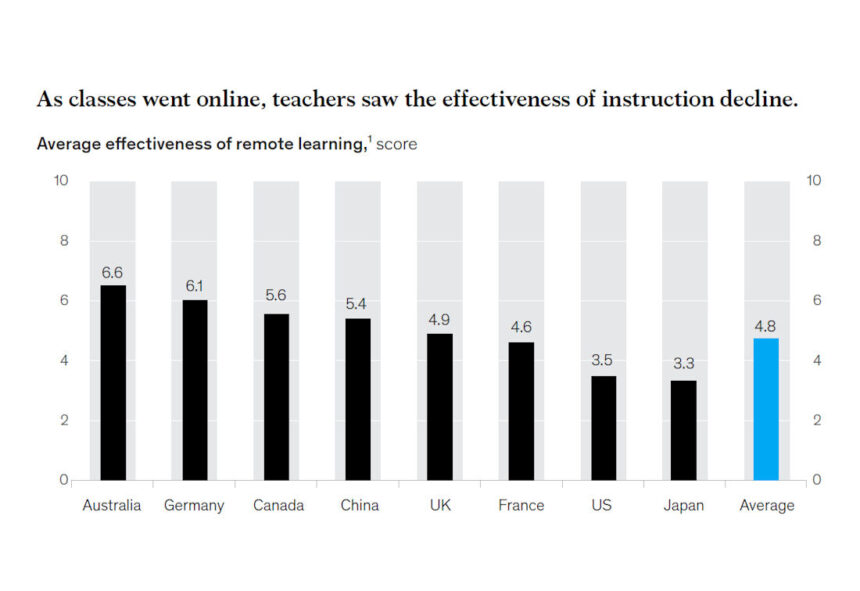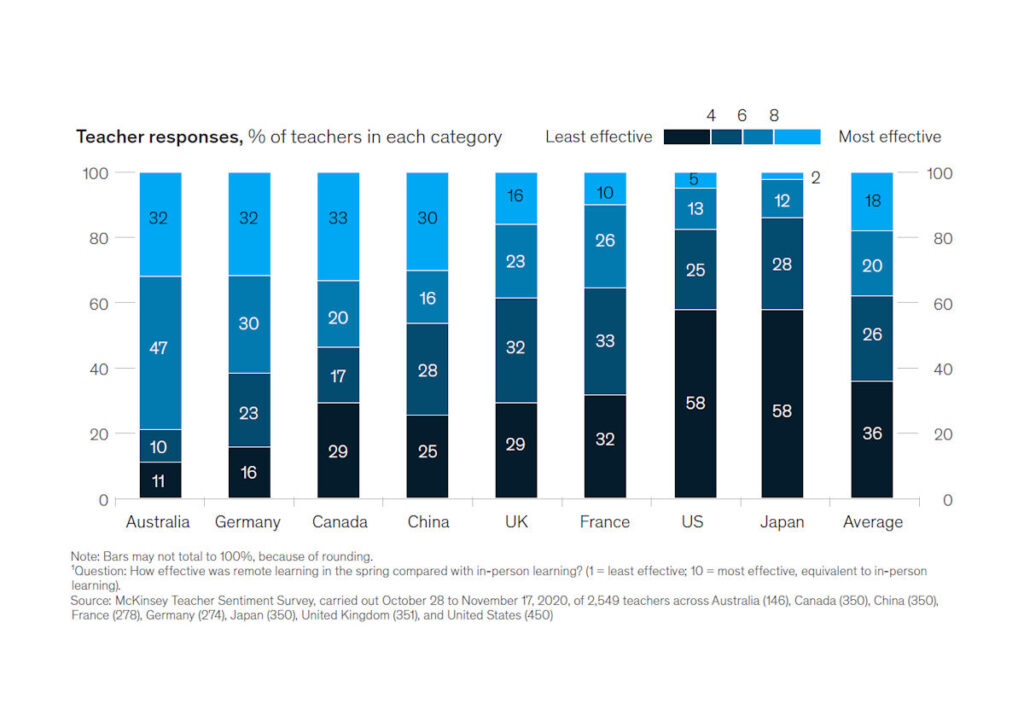
Teachers in eight countries rated the effectiveness of remote learning with a score of 5 in a 0-10 point scale, with zero representing little or no academic progress and ten comparable to what students would normally learn in a classroom.
These are findings of a recent survey by McKinsey, the global management consulting firm, in eight OECD countries (plus China), referred to the period between March and July of 2020 when distance learning was first rolled out in response to school shutdowns triggered by COVID-19 – during which, according to an UNESCO estimate, 1.6 billion children were no longer being taught in a physical classroom.
The survey also shows considerable variance between countries, ranging from over 6 out of 10 in Australia and Germany to 3.5 or less in the USA and Japan. In four countries – Australia, Germany, Canada and China – around one-third of respondents gave it a score of 8 or above, meaning that they felt that remote learning was almost as effective as being in class (see exhibit).

Athough in many cases remote classes have improved as schools adopted best practices, more effective teaching methods and more robust support systems, and students and their families adjusted to the new circumstances, the situation remains difficult for students who struggle with insufficient resources, isolation or learning challenges.
Regardless of the less adverse results in a few countries, this is a grim outcome with potentially disastrous consequences for the future of the children and young people worldwide, taking into account that the situation in less developed countries is most likely worse.
Note: This article must not be construed as an indictment of distance learning, and does not attempt to portray it as a wholly undesirable approach. It reflects factual outcomes that took place under specific circumstances. Any informed judgement on distance learning or any other approach must ponder a much broader set of results and circumstances.